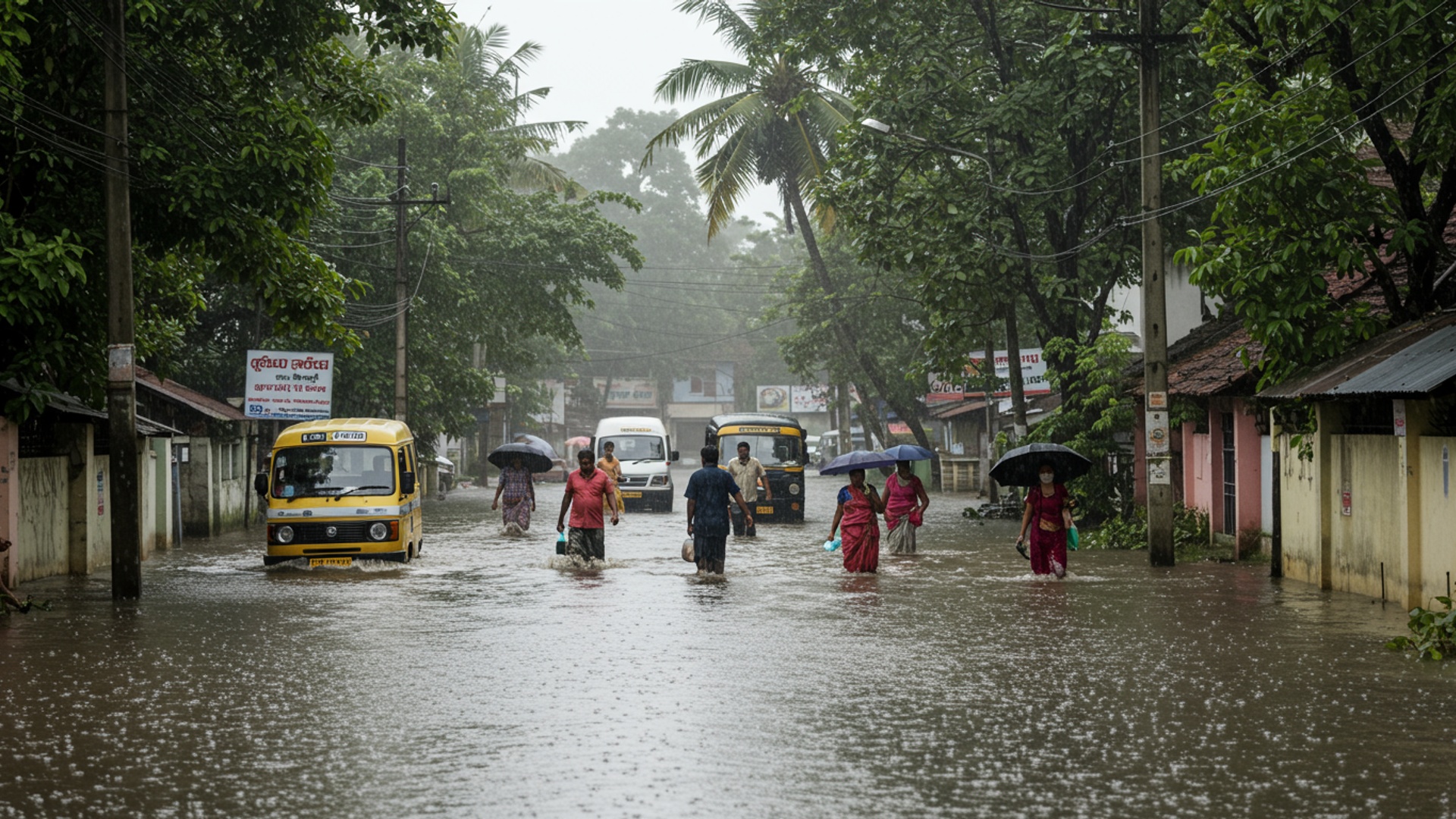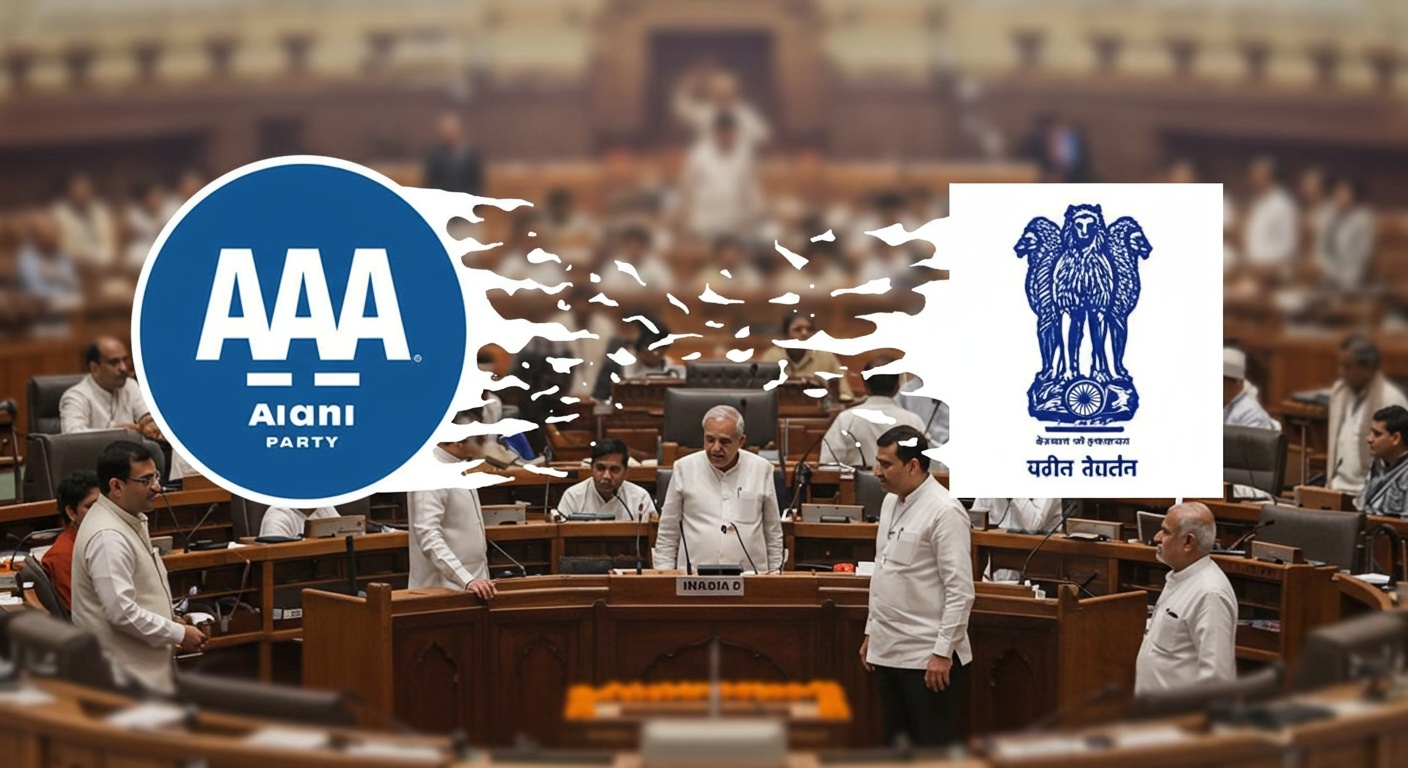Kerala is on high alert as the monsoon gets much stronger, causing authorities to issue orange alerts for very heavy rain across many parts of the state. People in the southern Indian region quickly prepare for a possible deluge, as weather officials warn of continuous downpours in the coming days. This urgent warning means communities must take immediate steps to face rising waters and strong winds, threatening homes and lives as the intense monsoon season unfolds.
Rain Forecast and Alert Levels
Kerala is currently experiencing an intensification of the southwest monsoon, leading to warnings of heavy to very heavy rainfall across various districts. The India Meteorological Department (IMD) has issued ‘Orange’ and ‘Yellow’ alerts, signalling the likelihood of significant precipitation in the coming days. An Orange alert indicates the possibility of very heavy rainfall, measuring between 115. 6 millimeters and 204. 4 millimeters within a 24-hour period. A Yellow alert signifies heavy rainfall, with expected amounts ranging from 64. 5 millimeters to 115. 5 millimeters over 24 hours.
For Sunday, August 17, Orange alerts are in place for Kannur and Kasaragod districts. Looking ahead, Kannur and Kasaragod will remain under an Orange alert on Monday, August 18, while Kasaragod will continue to be on Orange alert on Tuesday, August 19. On Saturday, August 16, five districts – Ernakulam, Idukki, Thrissur, Kannur. Kasaragod – were already under an Orange alert due to intense rainfall.
Yellow alerts have been issued for a wider range of districts. On Monday, August 18, districts such as Idukki, Ernakulam, Thrissur, Palakkad, Malappuram, Kozhikode. Wayanad are expected to receive heavy rainfall. The alert will extend to Malappuram, Kozhikode. Wayanad on Tuesday, August 19. By Wednesday, August 20, Kozhikode and Kannur will be under a Yellow alert. on Thursday, August 21, Kannur and Kasaragod will also be under this alert. On Saturday, August 16, the remaining nine districts not under an Orange alert, including Thiruvananthapuram, Kollam, Pathanamthitta, Alappuzha, Kottayam, Palakkad, Malappuram, Kozhikode. Wayanad, were under a Yellow alert.
Understanding the Weather Pattern
The current period of intense rain is connected to a low-pressure area that formed over south Chhattisgarh. This low-pressure system, combined with a related rotating air current, is pulling strong winds from the west into Kerala. This weather pattern is known to bring heavy rainfall to the region during the monsoon season. Along with the rain, strong surface winds are also expected. Winds speeds of 40 to 50 kilometers per hour are likely to continue over Kerala and Lakshadweep until Monday, August 18. There is also a chance of even stronger winds, up to 60 kilometers per hour, along the Kerala coast. These conditions contribute to the overall challenging weather scenario facing the state.
Potential Dangers and Safety Advice
The India Meteorological Department has warned about several potential dangers due to the heavy rainfall. These include the risk of flash floods, which can happen suddenly. widespread waterlogging, especially in low-lying areas. Hilly regions face an increased risk of landslides and mudslides, which can be very dangerous. Standing crops in fields are also vulnerable to damage. The intense rain can lead to poor visibility, which might cause traffic problems and increase travel time. There is also a risk of power cuts if trees fall or branches break and damage electrical lines. Homes, especially those built with temporary materials, could suffer partial damage. Also, people and cattle in open areas are at risk of injury from lightning during thunderstorms.
Given these risks, crucial safety advice has been issued. Authorities have urged people living in areas prone to landslides, mudslides. flash floods, especially near rivers and in hilly regions, to move to safer places as advised. People living near riverbanks and below dams are also told to be careful and move if needed. It is vital for people in high-risk areas to check if relief camps have been opened in their locality and move there during the day. Travel that is not essential should be avoided when the rain is heavy. Trips to waterfalls, water bodies. hilly areas for enjoyment should be completely avoided until the rain warnings are lifted. Extra care should be taken when driving on roads near water bodies and on roads that are being repaired. Drivers should also be aware that road accidents are more likely during very heavy rain. It is advised not to drive through areas where water bodies are overflowing onto roads.
In public and private spaces, dangerous trees, poles, signboards. walls should be made safe. tree branches should be trimmed. Any dangerous situations should be reported to the authorities. People in areas at risk of disaster should prepare an emergency kit right away.
Water Levels in Dams and Rivers
The continuing heavy rains have caused water levels to rise in several dams and reservoirs across Kerala. This has led to the opening of shutters at some key reservoirs as a safety measure to manage the water flow. In Pathanamthitta district, two shutters of the Kakki reservoir were opened to release water. In Palakkad district, the water levels in the Meenkara, Chuliyar. Walayar dams have reached a “third stage alert” status, indicating that they are nearing their full capacity and require close monitoring. Also, in Palakkad, the Siruvani Dam had its sluice shutters raised from 50 centimeters to 100 centimeters after crossing its allowed water level.
In Ernakulam, due to a large amount of water flowing into the Bhoothathankettu Barrage, authorities have opened eight of its 15 shutters one by one. People living along the Periyar river have been asked to remain alert because of this. In Wayanad, the spillway shutters of the Banasurasagar Dam were raised by 10 centimeters, with water being released gradually. Residents along the Karaman stream, Panamaram River. other low-lying areas in the vicinity have been advised to be cautious. For those near the Pampa river, increased water inflow into the Kakki-Anathode Dam in Pathanamthitta led to four shutters being opened, releasing water into the Pampa river, which could rise by up to 30 centimeters. People along the Pampa and Kakkat rivers, as well as in low-lying areas, have been warned to stay alert. The district official has also temporarily stopped pilgrims and the public from entering the Pampa River at Pampa Triveni and other spots. from using bathing areas.
Government Actions and Preparedness
The Kerala government has been actively preparing for the monsoon season, drawing lessons from past flood events, such as those in 2018 and 2020, which caused significant loss of life and property. To ensure quick action, the Kerala State Disaster Management Authority (KSDMA) has set up emergency helplines, 1077 and 1070, which operate round the clock through local and district control rooms. Fishermen have been strongly advised not to go into the sea until Wednesday due to the bad weather conditions.
The state government had earlier approved funds to help districts and local bodies prepare for the monsoon. For instance, one crore Indian Rupees were given to each District Collector from the State Disaster Response Fund (SDRF). Additional funds were specifically set aside for flood prevention work in vulnerable urban areas like Thiruvananthapuram and Kozhikode. Local self-government bodies also received funds to buy necessary equipment and set up storage centers.
Before the monsoon intensified, pre-monsoon cleaning activities were ordered for drains, canals. culverts to prevent waterlogging. Measures were also taken for mosquito control. Government meetings, including those chaired by Revenue Minister K. Rajan and Chief Secretary Dr. Jayathilak, have focused on speeding up these preparatory works and ensuring all government agencies are ready. Training programs have been planned to quickly activate emergency response systems at the district and local levels. Lists of people living in areas prone to disasters are being updated. buildings for relief camps have been identified. There is also a focus on creating special disaster management plans for tribal settlements to ensure their safety.
National Disaster Response Force (NDRF) teams are being positioned in vulnerable areas, especially in central and northern Kerala, to assist with rescue and relief efforts. The KSDMA has also published an “Orange Book of Disaster Management 2025,” which provides detailed guidelines for monsoon preparedness and response. This document helps people grasp what the different alerts mean and how to prepare. These ongoing efforts show a strong focus on protecting residents and minimizing the impact of the intense monsoon.
![]()


















